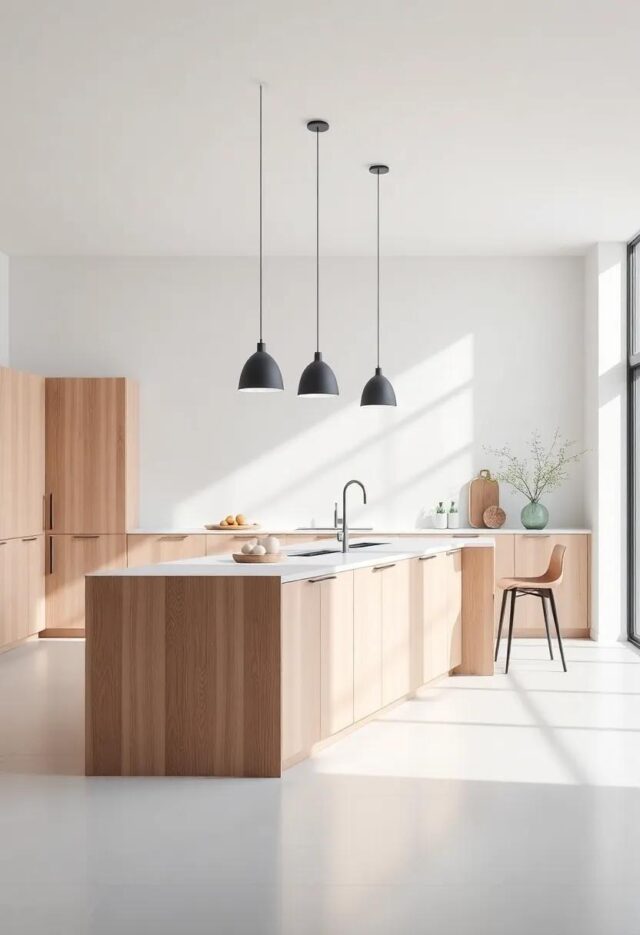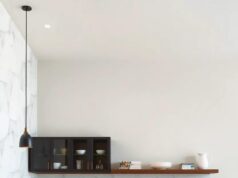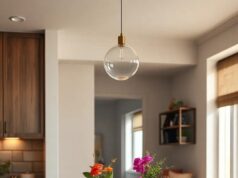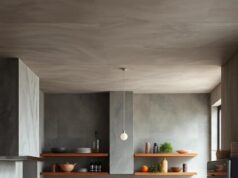In an era where excess frequently enough overshadows simplicity,the Scandinavian kitchen island emerges as a beacon of minimalist design—a harmonious blend of form and function that transforms the heart of the home. Wiht its clean lines, natural materials, and a focus on utility, the Scandinavian kitchen island epitomizes the essence of minimalism, inviting us to reimagine our spaces with intention and purpose. As an integral centerpiece in the kitchen,it not only serves as a gathering spot for family and friends but also embodies a beliefs that encourages us to declutter our lives and appreciate the beauty of well-crafted,uncomplicated living. In this article, we will explore the charm and practicality of the Scandinavian kitchen island, revealing how it can elevate your home’s aesthetic while promoting a lifestyle rooted in simplicity and mindfulness.
Embracing Nordic Aesthetics in Kitchen Island Design
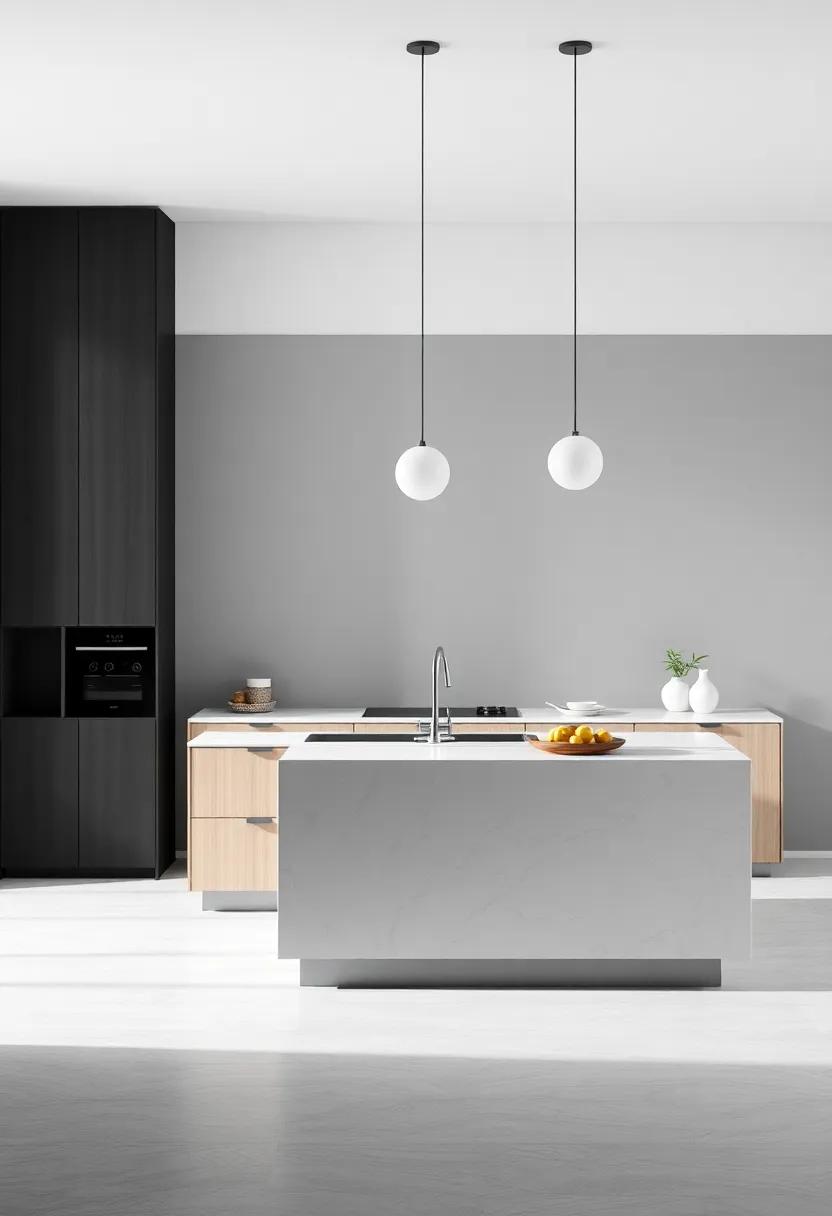
Incorporating Nordic aesthetics into a kitchen island design elevates the space with a calming and functional elegance. The essence of Scandinavian design lies in its ability to blend simplicity with functionality, emphasizing clean lines and natural materials.When selecting materials for your kitchen island, consider light woods, stone surfaces, and soft pastel colors to create a serene atmosphere. A minimalist approach encourages an open layout, allowing for easy movement and interaction, perfect for gatherings and everyday cooking. The use of subtle textural contrasts further enhances the visual interest, achieving an inviting yet uncluttered feel.
To achieve this aesthetic, focus on features that embody both beauty and practicality. Consider the following elements for your kitchen island:
- Integrated storage solutions that keep essential items within reach while maintaining a tidy appearance.
- Simple pendant lighting that adds a touch of warmth without overwhelming the space.
- Multi-functional surfaces that can withstand the hustle and bustle of daily life.
When designing with Nordic principles, the kitchen island becomes a true centerpiece that unifies style and functionality, inviting harmony into your home.Below is a brief table highlighting popular Nordic materials and their benefits:
| Material | Benefits |
|---|---|
| Light Oak | warmth and durability |
| Marble | Elegant and timeless |
| Concrete | industrial charm |
| Birch Plywood | Eco-amiable and versatile |
The Allure of Clean Lines in Scandinavian Architecture
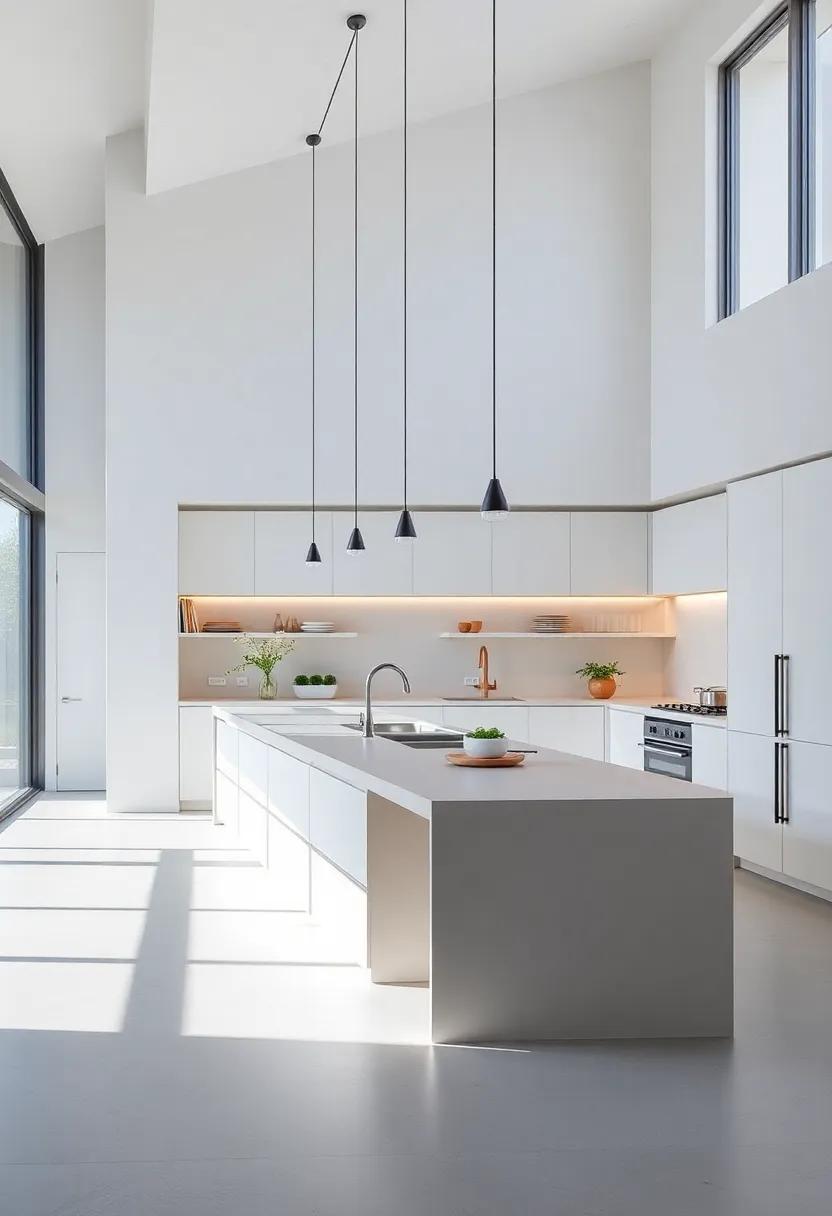
The beauty of Scandinavian architecture lies in its striking simplicity, where clean lines create a sense of calm and order. This design philosophy is remarkably evident in the Scandinavian kitchen island, which serves as a functional centerpiece while embodying a minimalist aesthetic.Crafted from natural materials such as wood, stone, and metal, these islands emphasize functionality and elegance.With seamless surfaces and an uncluttered layout, they invite interaction and serve as a gathering point for family and friends, enhancing the hospitality inherent in Scandinavian culture.
Central to this design concept is the idea of open space, where each piece serves its purpose without excess. Elements such as integrated storage solutions and multi-purpose functionalities maintain the flow throughout the kitchen. Consider the following features that enhance both form and function:
- Natural Light: Large windows frame the area,filling it with warmth and brightness.
- Neutral Colour Palettes: Soft whites, grays, and natural wood tones create a serene environment.
- Minimalist Hardware: Streamlined cabinetry and simplistic drawer pulls heighten visual appeal.
To illustrate the effectiveness of this approach, here’s a brief comparison of popular materials for kitchen islands:
| Material | Advantages | Considerations |
|---|---|---|
| Wood | Warmth and texture | Requires maintenance |
| Quartz | Durable and non-porous | Can be costly |
| Concrete | Industrial look; customizable | Heavy and can crack |
Creating a Focal Point: The Role of Color in kitchen Islands
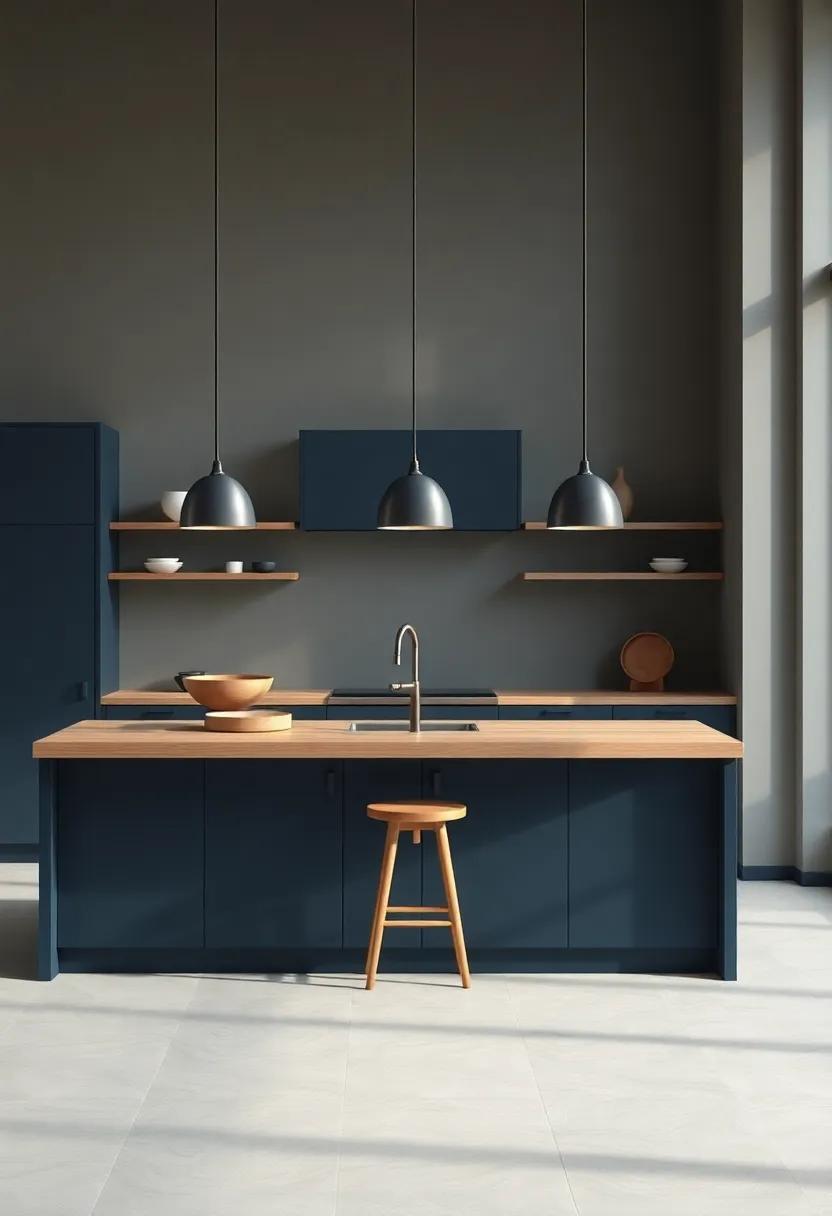
In the realm of Scandinavian design, color plays a pivotal role in defining the character of kitchen islands, ensuring they serve not just as functional spaces but also as stunning design focal points. Neutral hues such as soft whites, gentle grays, and muted pastels dominate this aesthetic, fostering a sense of tranquility and allowing the simplicity of the design to shine. These colors create a harmonious environment that encourages mindfulness and relaxation, while also reflecting the natural light that is frequently enough a hallmark of Scandinavian interiors. Furthermore, subtle accents of bolder shades—think deep navy or forest green—can provide a striking contrast, drawing the eye and creating a visual anchor in the kitchen layout.
to enhance the impact of color on kitchen islands, incorporating textures and materials can elevate the overall appeal. Consider the following elements:
- Natural Wood finishes: Soft oak or birch cabinetry adds warmth and organic appeal.
- Stone Countertops: Marble or quartz in light tones can introduce class and sophistication.
- Pops of Color: Use colorful bar stools or decorative vases to bring life to the minimalist palette.
Moreover, a well-chosen color scheme can enhance functionality while maintaining aesthetic integrity. Here’s a rapid overview of how color affects perception in your kitchen:
| Color | Impact |
|---|---|
| White | Enhances space and brightness |
| Gray | Provides a modern, sleek appearance |
| pastels | Injects a playful yet calming vibe |
| Bold Accents | Creates visual interest and depth |
By here you can see how the right colors not only beautify the kitchen island but also shape the overall atmosphere in your Scandinavian kitchen. choosing mindfully ensures that the kitchen remains a warm, inviting space at the heart of the home, perfectly blending form and function.
Natural Materials: Wood and Stone in Scandinavian Interiors
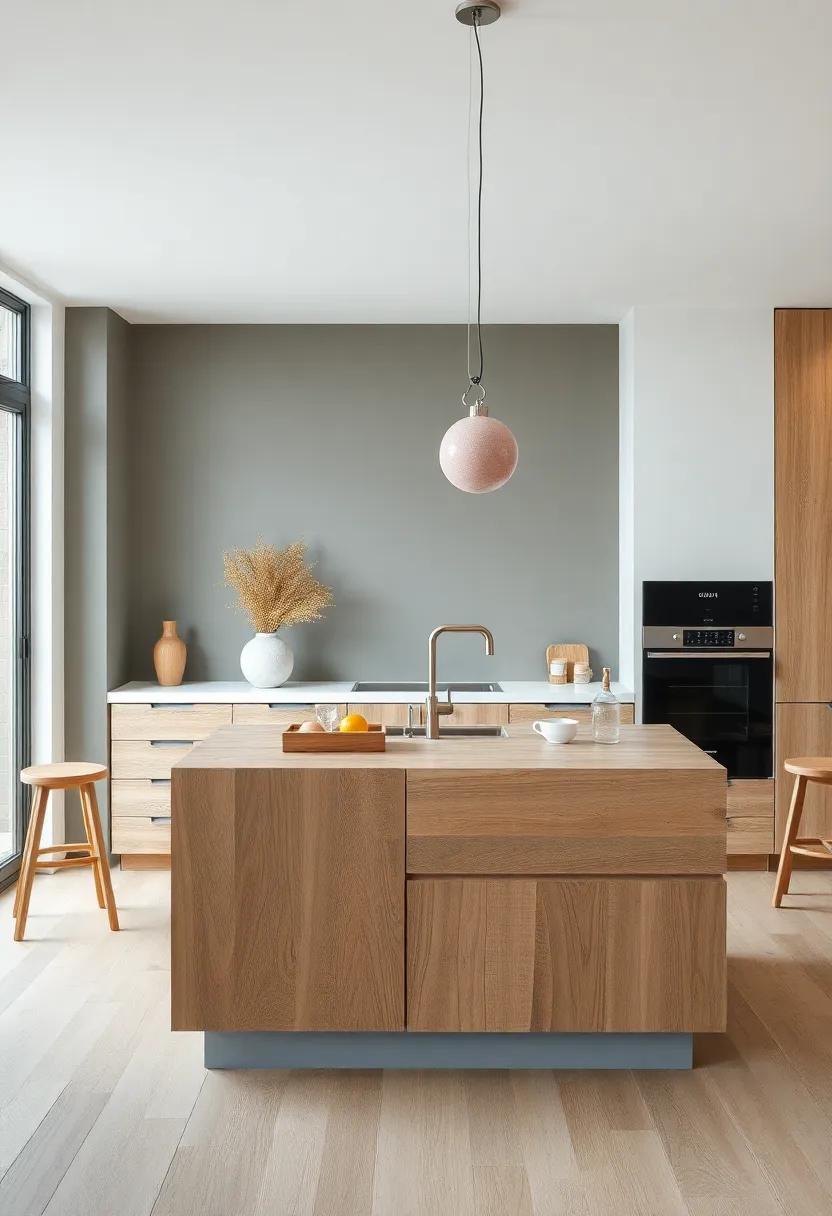
When it comes to Scandinavian interiors, the earthy allure of natural materials plays a pivotal role in creating a serene and inviting atmosphere. Wood and stone, celebrated for their organic textures and tones, form the foundation of the style’s minimalistic yet warm aesthetic. The kitchen island, frequently enough crafted from locally sourced timbers like birch or ash, becomes not just a functional element but a focal piece that harmonizes with the surrounding decor. Paired with smooth stone surfaces, such as marble or granite, these materials invite a sense of balance and simplicity to everyday culinary experiences.
The incorporation of these natural materials extends beyond mere functionality; it speaks to sustainability and a connection with nature.Key features of Scandinavian kitchens often include:
- open grain wood finishes: enhancing warmth and character.
- Textured stone accents: adding depth to or else sleek surfaces.
- Natural color palettes: emphasizing earthy tones that reflect the Nordic landscape.
In essence, by integrating wood and stone, the kitchen island serves not just as a readiness space but also as a canvas that showcases the craftsmanship and the beauty of the natural world. With a focus on clean lines and minimal adornment, the result is a cohesive and inviting design that resonates with the ethos of Scandinavian living.
Spatial Harmony: Designing Around the Kitchen Island

A kitchen island serves as a multifaceted core of any Scandinavian kitchen, bridging functionality and aesthetics. Ideally, it creates an open layout that promotes social interaction while maintaining a tidy environment. The minimalist design emphasizes simplicity, making use of clean lines and natural materials. Consider integrating features such as:
- Integrated seating: Bar stools tucked beneath the countertop can transform the island into a casual dining area.
- Smart storage solutions: Use drawers and cabinets that blend seamlessly into the design.
- Multi-functional surfaces: incorporate a cooking area, prep space, or even a sink to maximize utility.
To enhance spatial harmony, the alignment of the island with surrounding elements is key. Utilizing neutral color palettes, such as whites and soft pastels, accentuates natural light and creates a sense of openness. Here’s a simple breakdown of how to achieve this balance with crucial design elements:
| Element | Function | Design Tip |
|---|---|---|
| Lighting | Illuminates the workspace | Choose pendant lights with a minimalist design. |
| Colors | Sets the mood | Stick to a palette that harmonizes with wood tones. |
| Materials | Defines texture | Incorporate natural elements like wood and stone. |
Functionality Meets Form: The Essentials of Minimalist Design
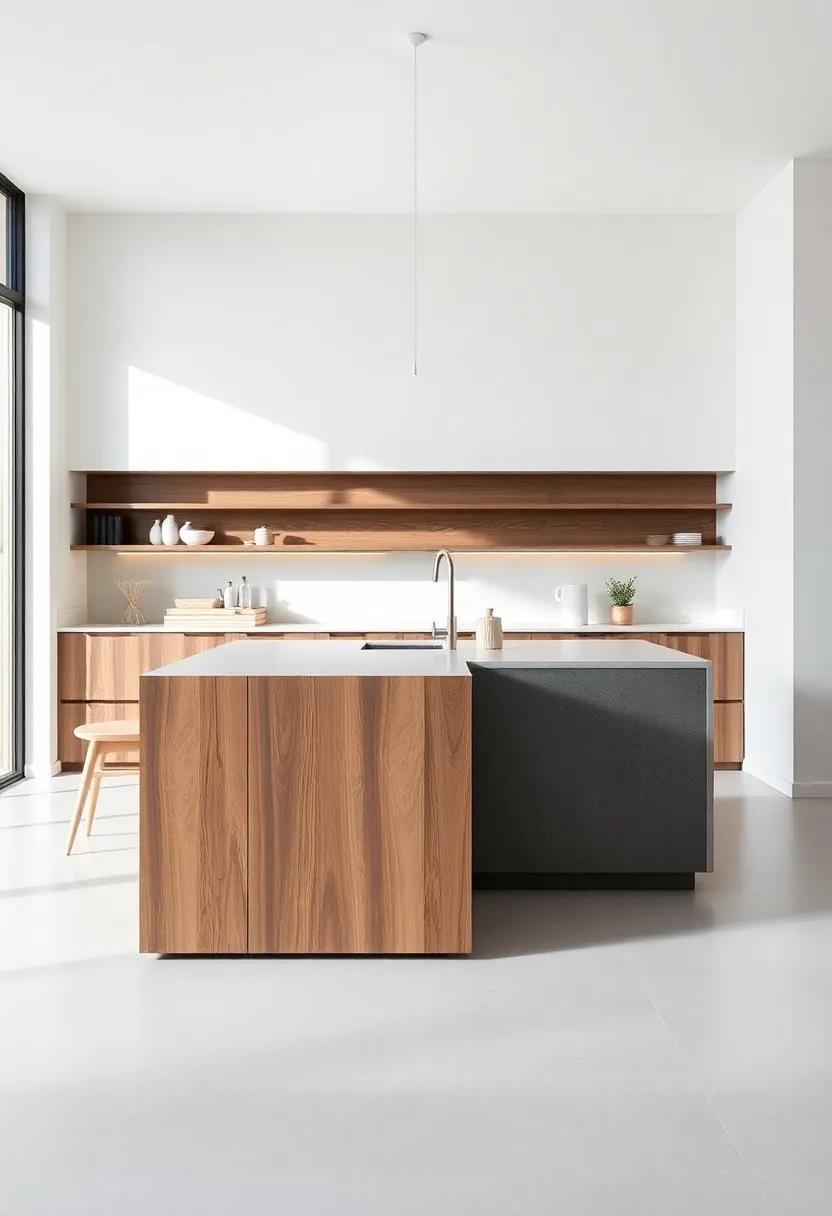
At the heart of Scandinavian design lies a philosophy that champions simplicity and functionality. The Scandinavian kitchen island epitomizes this ethos, where every element serves a purpose while exuding an effortless charm. Its understated aesthetics often feature clean lines, natural materials, and a neutral color palette, creating an inviting atmosphere. What truly sets these kitchen islands apart is their ability to blend seamlessly with various interiors, acting as a focal point rather than a cluttered centerpiece. Elements such as integrated storage, smart seating solutions, and multi-functional surfaces further enhance the minimalist appeal, ensuring that form never compromises function.
To grasp the essentials of this design approach, consider key aspects that define a Scandinavian-inspired kitchen island:
- natural Materials: Emphasizing wood, stone, and metal that are sustainably sourced.
- Open Spaces: promoting an airy environment with minimal barriers to visibility.
- Integrated Technology: Incorporating smart appliances and features that streamline cooking and entertaining.
The careful selection of materials and design components cultivates not just a kitchen island, but a design statement that resonates with the principles of minimalist living. This blend of functionality and aesthetic harmony not only enhances the cooking experience but also transforms the kitchen into a warm and welcoming space for gathering and connection.
Simplicity in Storage Solutions: Clever Design Ideas
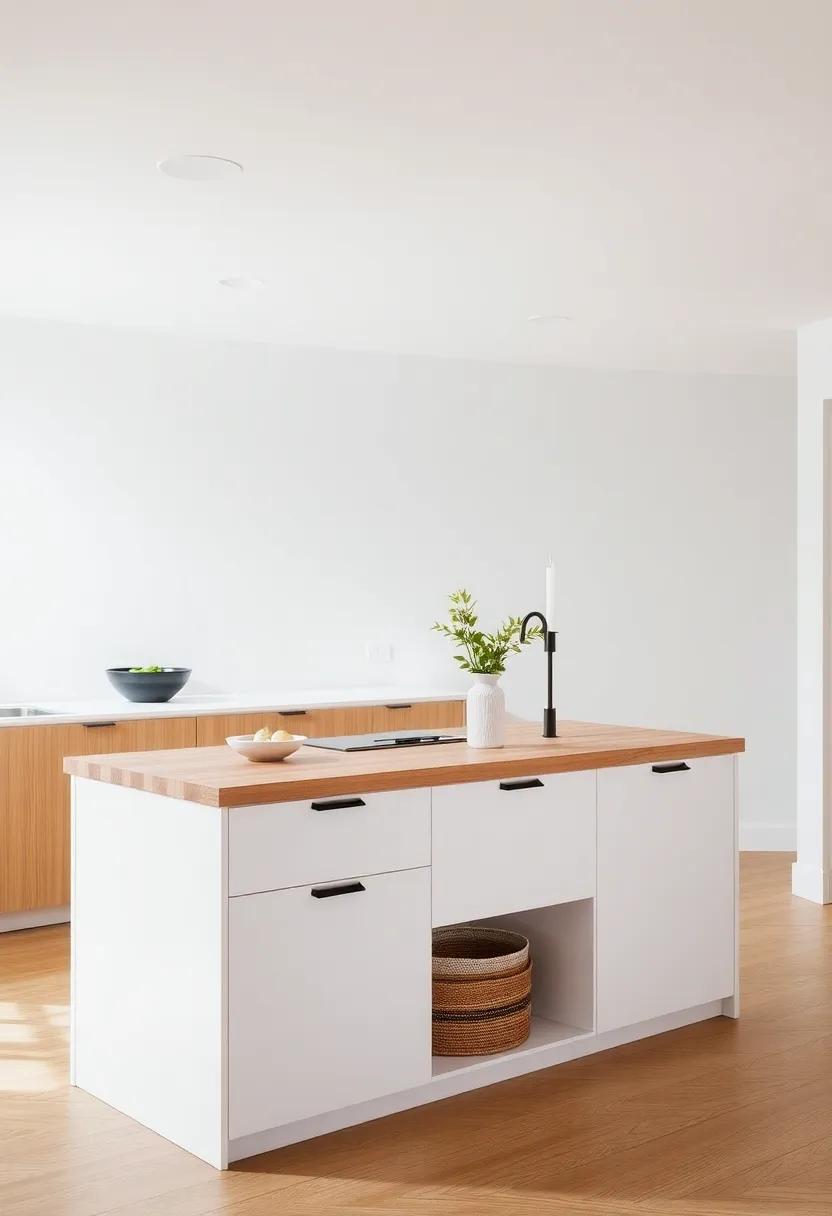
The appeal of Scandinavian design lies in its ability to marry functionality with aesthetic simplicity, especially in the realm of kitchen islands. A Scandinavian kitchen island serves not just as a practical workspace, but also as an elegant focal point that breathes life into the culinary space. Featuring lines that are clean and minimal, these islands can be seamlessly integrated into existing decor while providing a variety of clever storage solutions. Consider options like:
- Hidden cabinets to keep clutter at bay
- Open shelving for easy access to frequently used items
- Pull-out drawers for storing pots and pans
Moreover, choosing a kitchen island with a multi-functional design enhances its utility without sacrificing style. For those looking to expand on this concept,think about integrating a butcher block top for food prep,or creating designated zones for cooking and socializing.The following table illustrates various configurations that embody this harmonious balance:
| Configuration | Functionality | Style element |
|---|---|---|
| Fixed Island | Prep and Cook Area | Clean Lines |
| Rolling Island | Flexible Use | Natural Wood Finish |
| Two-Level Island | Dine and Serve | Contrasting Colors |
Highlighting Textures: The Impact of fabrics and Finishes

In the realm of minimalistic design, the choice of fabrics and finishes contributes profoundly to the overall atmosphere of a space. The Scandinavian kitchen island is often adorned with natural materials that resonate with the simplicity of its design ethos. From smooth, lacquered wood to textured stone surfaces, each element plays a crucial role in achieving an aesthetic balance. The interplay between these materials can create a tactile experience, inviting users to engage with the space not just visually but also through touch. Organic linens, for example, can be used for kitchen textiles, adding warmth and a gentle contrast to the sleekness of metals and stones, while maintaining an understated elegance.
Moreover, finishes can dramatically alter the perception of texture and depth.As a notable example, a matte-finished countertop paired with shiny brass fixtures can create a striking juxtaposition.Consider the following options for enhancing your kitchen island:
- Polished Marble: sleek and elegant, enhances luxury.
- Textured Wood: Adds warmth and a rustic touch.
- Brushed Metals: Provides an industrial edge without overwhelming the minimalist aesthetic.
By thoughtfully selecting these materials and finishes, your kitchen island can effortlessly become a centerpiece that embodies both function and form, inviting a sense of tranquility and cohesion.
Illuminating Spaces: Scandinavian lighting Choices

Scandinavian lighting is pivotal in elevating the ambiance within a kitchen space,particularly around the central island. A well-selected lighting fixture not only complements the minimalist aesthetic but also serves as a functional element, enhancing both task performance and overall atmosphere. Consider incorporating pendant lights that hang gracefully above the island; they can create a focal point while providing ample illumination for food preparation and family gatherings. Options like matte-finish metals or frosted glass can seamlessly integrate with the clean lines of Scandinavian design.
- Simple geometric shapes: Emphasize elegance and minimalism.
- Natural materials: Wood, fabric, and metal harmonize with kitchen elements.
- Adjustable fixtures: practical to cater to different tasks and moods.
As you consider the arrangement, ensure that the lighting complements the overall color palette of your kitchen. Soft whites and warm tones can enhance the feeling of spaciousness, evoking the serene, airy vibe characteristic of Scandinavian interiors. For an integrated look,try pairing your fixtures with a cohesive selection of materials and finishes throughout the space. Below is a simple comparison table showcasing popular lighting choices for a Scandinavian kitchen island:
| Lighting Type | Material | Functionality |
|---|---|---|
| Pendant Lights | Glass, Metal | Task Lighting |
| Under-cabinet Lighting | LED Strip | Ambient Lighting |
| Track Lighting | Aluminum | Versatile illumination |
Open Concept living: Integrating Kitchen Islands Seamlessly
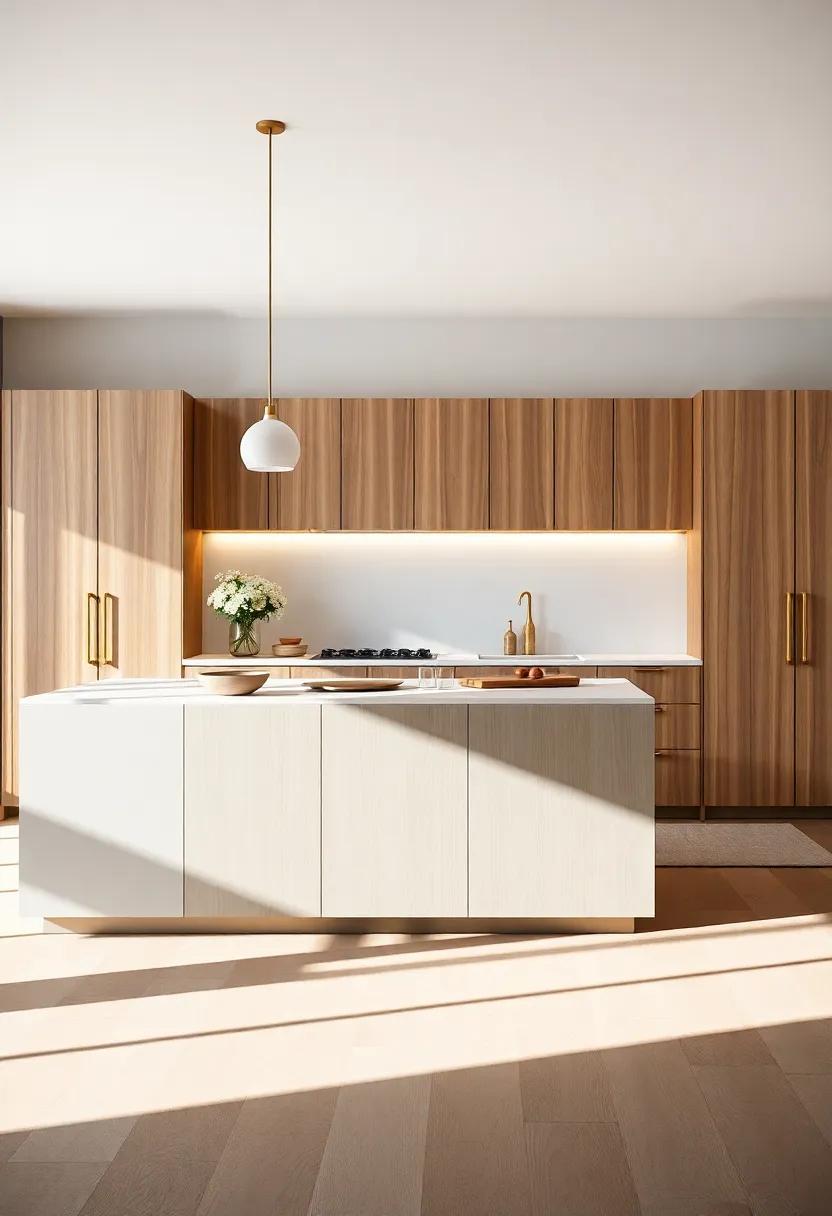
In the world of open concept living, the kitchen island stands as a functional and aesthetic bridge between spaces. Its design, particularly in Scandinavian homes, highlights clean lines and minimalist principles, creating an inviting yet sophisticated environment. By incorporating natural materials such as wood and stone, these islands not only serve as cooking and dining surfaces but also become visual anchors that draw attention without overwhelming the senses. The key to achieving this integration lies in a thoughtful layout that promotes flow, allowing for ample interaction between the kitchen, dining, and living areas.
To ensure seamless connections between the kitchen island and adjacent areas, careful consideration of color palettes and furniture styles is essential. Neutral tones—think soft whites, greys, and earthy hues—enhance the airy feel characteristic of Scandinavian design while making it easier to blend various elements. Additionally, strategically placed lighting fixtures, such as pendant lights, can create focal points above the island that elevate the overall aesthetic. Consider these essential features when designing your kitchen island:
- Material Selection: Choose sustainable woods or sleek stone finishes.
- Multi-Functionality: Incorporate seating or storage to maximize utility.
- Lighting Choice: Use striking but simple light fixtures to create warmth.
| Element | Purpose | Design Tip |
|---|---|---|
| Countertop | Work surface | Opt for a quartz finish for durability |
| Storage | Hide clutter | Integrate drawers and cabinets |
| Seating | Informal dining | use bar stools that match the island’s aesthetics |
Culinary Integration: Cooking With Style and Efficiency
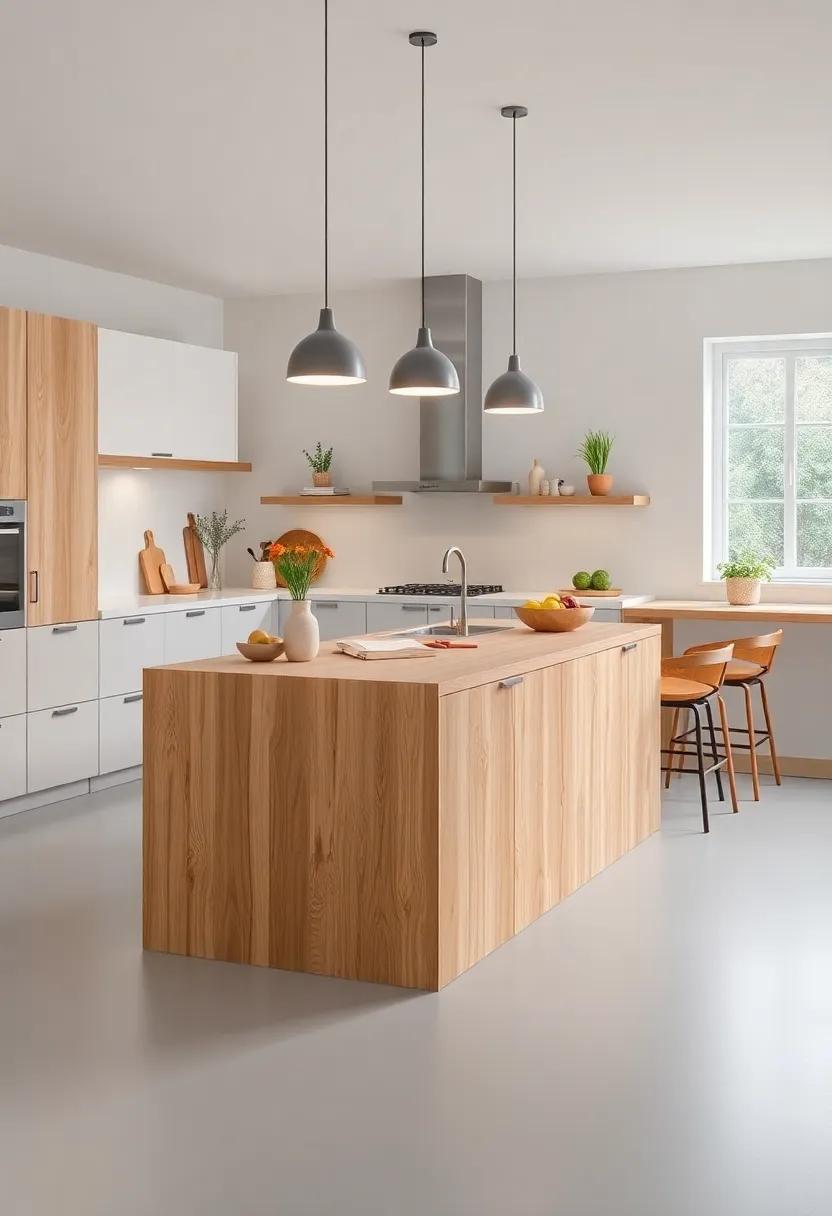
Creating a harmonious blend of style and efficiency in the kitchen can transform cooking from a daily chore into an enjoyable ritual. The Scandinavian kitchen island, known for its sleek lines and functional design, serves as an ideal centerpiece for this integration. by prioritizing minimalism and simplicity, this design element not only enhances the aesthetic appeal of the space but also promotes organized cooking stations and uncluttered surfaces. The use of natural materials such as wood and stone adds warmth, making the island a welcoming spot for both meal preparation and social gatherings.
Incorporating multifunctional elements into the kitchen island can elevate the cooking experience significantly. Consider these innovative features for a truly optimized space:
- Built-in storage: Every inch counts. Utilize drawers and shelves to keep utensils and ingredients within easy reach.
- Seating area: A small overhang can create a casual dining space, perfect for quick meals or entertaining guests.
- integrated appliances: Incorporate a microwave or small cooktop to maximize functionality without sacrificing design.
| Feature | Description |
|---|---|
| Material | Natural wood or stone for warmth and durability |
| Style | Sleek and minimalist design for a modern look |
| Functionality | Multifunctional space for cooking, dining, and socializing |
The Serene Palette: Color Schemes for Tranquil Kitchens
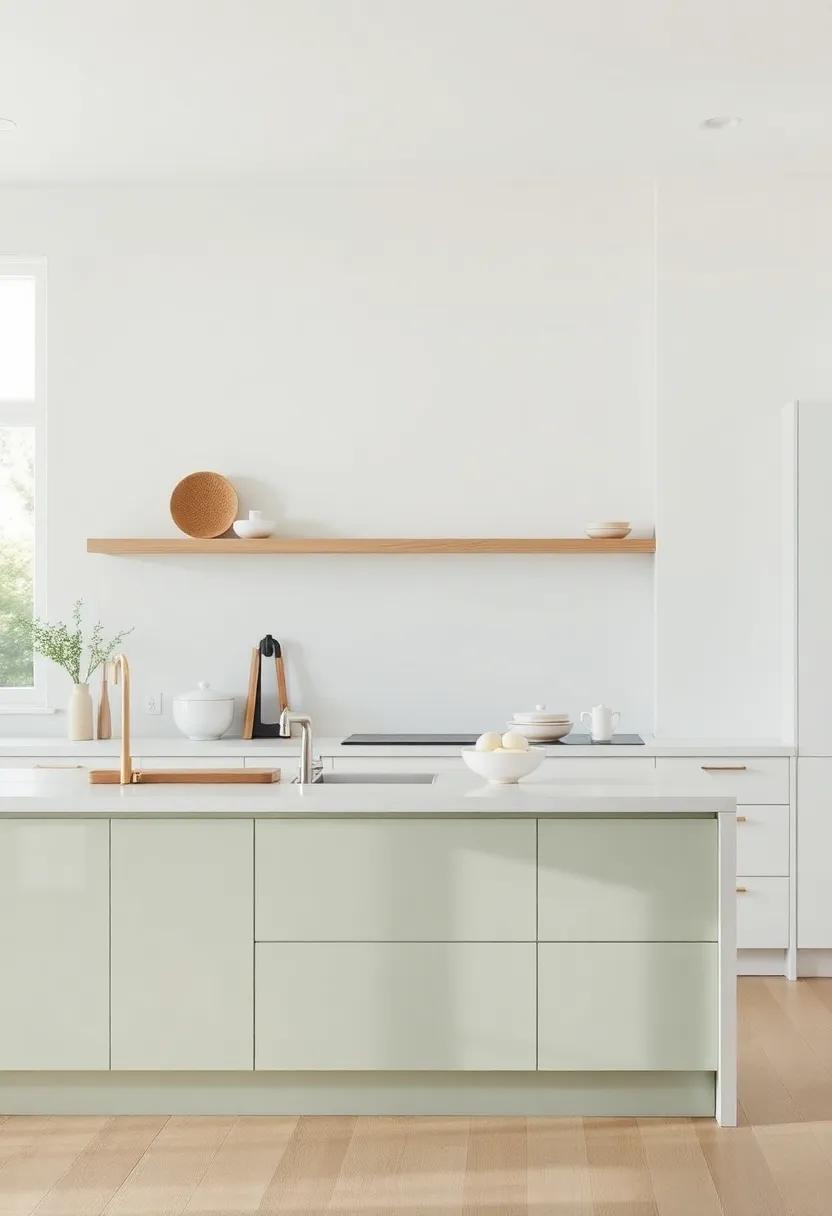
When designing a tranquil kitchen, color plays a pivotal role in cultivating a space that exudes calm and serenity. For a Scandinavian-inspired aesthetic, consider using soft pastels and earthy tones to create a gentle ambiance. The combination of colors like light sage, muted blues, and warm beige can evoke a sense of peace, making your kitchen a perfect retreat. To enhance this serene vibe, incorporate natural wood elements and white or cream cabinetry, which effortlessly complements these color schemes.
Below are some effective color combinations that work beautifully in a contemporary kitchen setting:
- Light Gray & Soft Mustard – This pairing adds warmth while maintaining an airy feel.
- Dusty Rose & Olive Green – A charming blend that introduces subtle personality without overwhelming the senses.
- Powder Blue & White – Timeless and clean, perfect for a refreshing atmosphere.
| Color Scheme | emotional impact |
|---|---|
| Light Gray & Soft Mustard | Warm and inviting |
| Dusty Rose & Olive Green | Charming and Serene |
| Powder Blue & White | Refreshing and Calm |
Inviting Warmth: The Role of Rugs in scandinavian Spaces
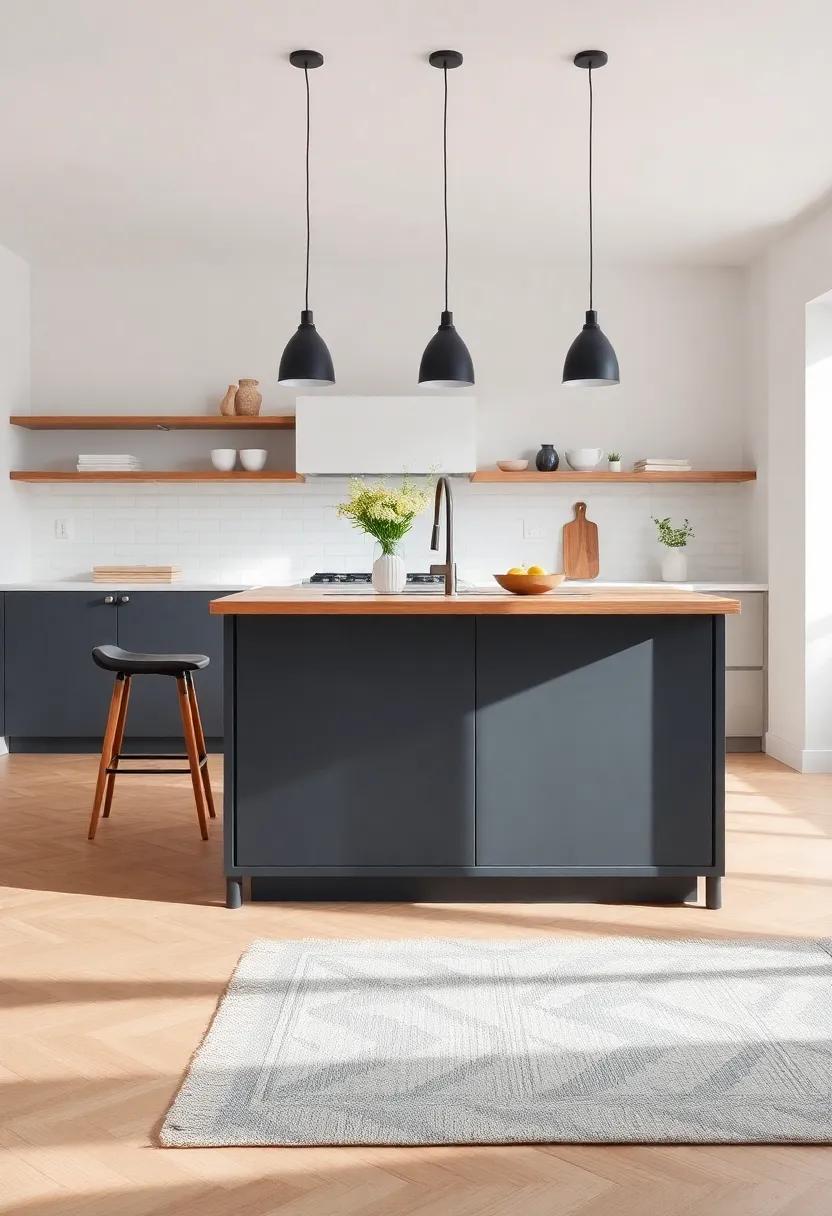
In Scandinavian design, where simplicity reigns supreme, the addition of rugs offers a gentle contrast that enriches the overall aesthetic.These textiles serve not only as decorative elements but also as vital components that inject warmth into an or else stark environment. Often featuring soft, natural fibers and muted tones, rugs can soften the clean lines and minimalist palettes commonly found in modern kitchens. By incorporating textures through rugs, spaces become cozier and more inviting, making them perfect for both family gatherings and quiet evenings.
When selecting a rug for a Scandinavian kitchen island, consider the following attributes to enhance the design:
- Material: Natural fibers like wool, jute, or cotton are favored for their durability and eco-friendliness.
- Color Palette: Neutral shades or muted pastels maintain the aesthetic integrity while infusing warmth.
- Pattern: Subtle geometric prints can add interest without overwhelming the serene vibe.
- Size: A larger rug can define the kitchen island area, creating a distinct zone in open-concept layouts.
Sustainable Choices: Eco-Friendly Materials for Your Kitchen
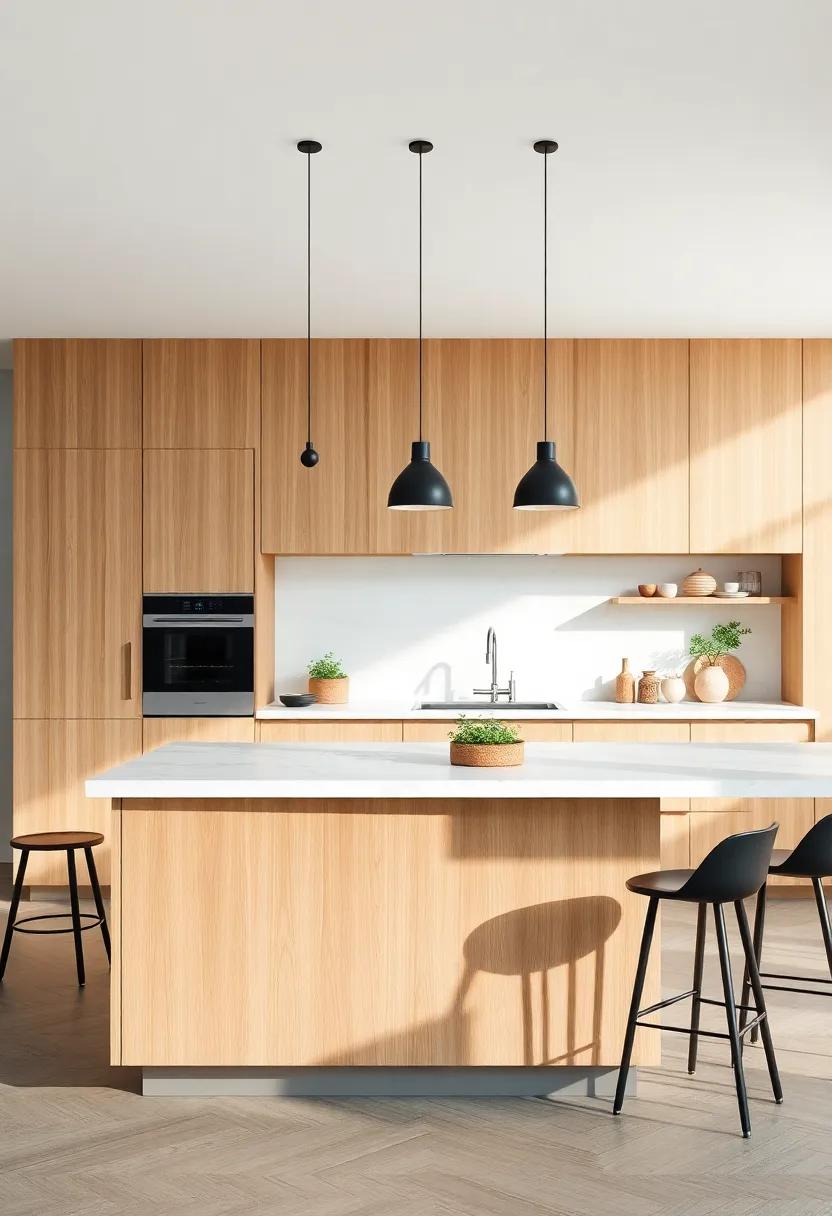
In the quest for a sustainable kitchen, choosing eco-friendly materials is paramount. When designing a Scandinavian kitchen island,look for options such as bamboo,recycled wood,and cork,all of which are not only environmentally friendly but also seamlessly blend with the minimalist aesthetic. These materials are renowned for their durability and low environmental impact, ensuring that the centerpiece of your kitchen is both stylish and responsible. Bamboo, in particular, is a fast-growing grass that absorbs more CO2 than many trees, making it an excellent choice for an eco-conscious lifestyle.
Along with natural materials, integrating energy-efficient appliances and fixtures can further reduce your kitchen’s ecological footprint. Consider the following items to enhance sustainability:
- LED Lighting: Reduces energy usage and lasts much longer than traditional bulbs.
- Low-Flow Faucets: Saves water without sacrificing performance.
- Recycled Glass Countertops: Offers a unique look while diverting waste from landfills.
Incorporating these elements not only honors minimalist design principles but also champions eco-conscious living, creating a kitchen island that is as functional as it is in harmony with the planet.
Balancing Aesthetics and Utility in Kitchen Islands
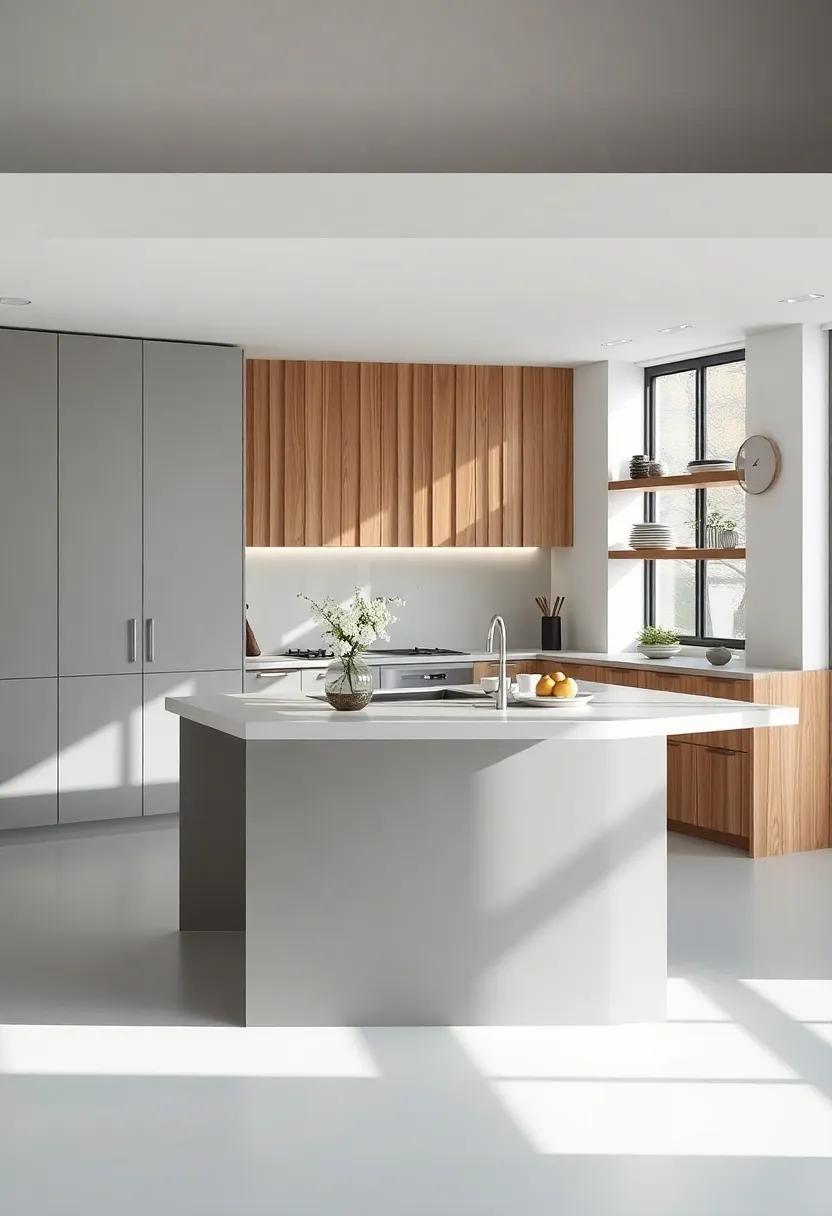
In the world of kitchen design, the concept of beauty often stands shoulder to shoulder with functionality, particularly when it comes to kitchen islands. Scandinavian design champions simplicity, so the key to a triumphant kitchen island lies in its ability to serve multiple purposes without overwhelming the space.A well-designed island can seamlessly integrate storage, prep space, and seating while maintaining a visually pleasing appearance. incorporating materials such as light woods, sleek metals, and muted colors can elevate the island’s utility while also ensuring it harmonizes with the overall design ethos.
When considering the balance of aesthetics and utility, elements such as clean lines, minimalist hardware, and natural finishes play pivotal roles. Anchoring the kitchen with a thoughtfully designed island can foster an atmosphere of calm and order, crucial in a space often bustling with activity.Take a look at the following features that enhance both form and function:
| Feature | Description |
|---|---|
| Integrated Storage | Maximizes space while keeping surfaces tidy. |
| Seating Capacity | Encourages social interaction without compromising movement. |
| Preparation Surface | Provides ample room for culinary activities. |
| Stylish Lighting | Enhances ambiance while providing functional visibility. |
Embracing Light: Optimizing Natural Illumination in Kitchens
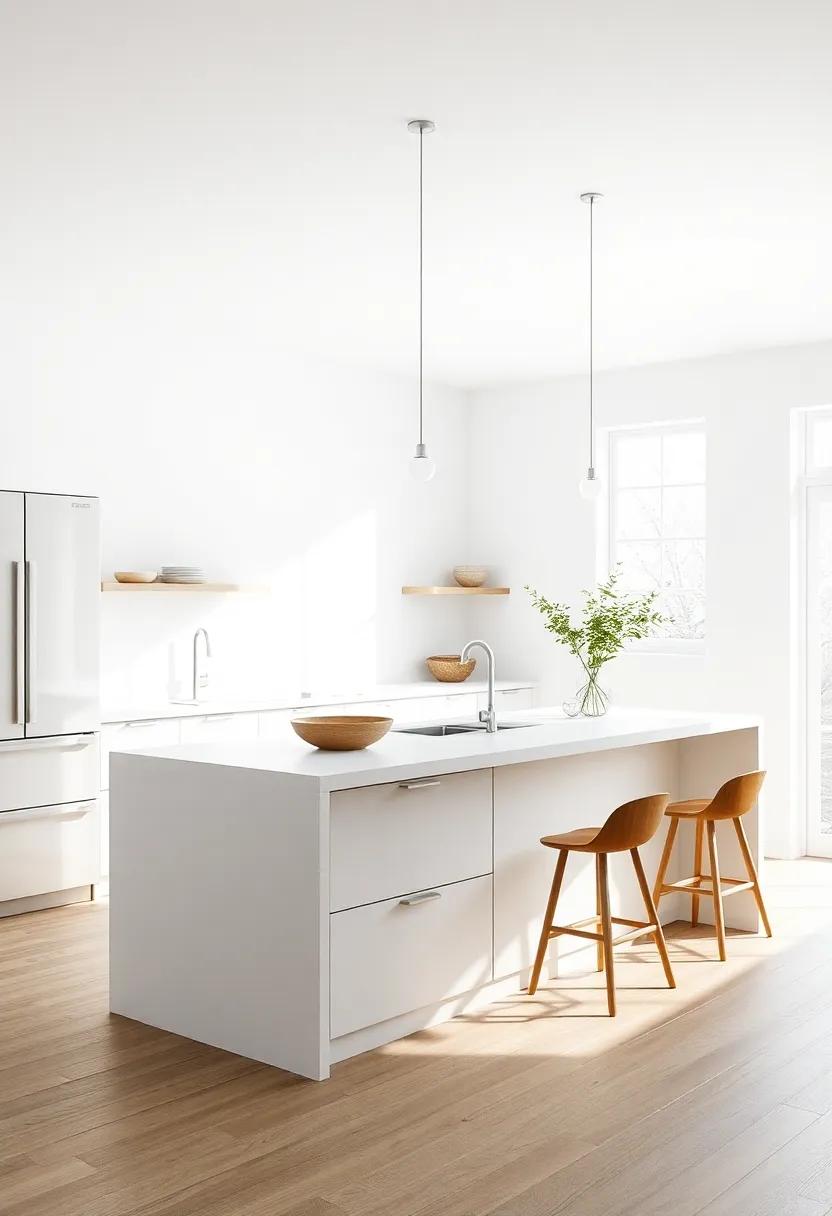
To truly harness the charm of the Scandinavian kitchen island, it is essential to optimize the natural light that floods the space. Natural illumination not only enhances the aesthetic appeal but also creates a warm and inviting atmosphere conducive to cooking and gathering. Large windows strategically placed near the island invite the outside world in, while reflective surfaces such as polished stone or light wood accents help bounce sunlight around the room, maximizing brightness.When designing the kitchen layout, consider the orientation of the windows to capture morning light or afternoon rays, depending on your preferences. Additionally, pale paint shades can amplify the effects of natural light, making the kitchen feel airy and spacious.
Integrating natural materials in your kitchen design is another effective way to complement the ambiance created by natural lighting. As a notable example, using light-colored wood for cabinets and the island not only aligns with minimalist aesthetics but also resonates with the organic theme frequently enough found in Scandinavian design. Incorporating greenery through potted herbs or decorative plants on the island can infuse life into the space, reinforcing the connection between indoors and outdoors. Consider these elements when crafting your kitchen to ensure that every surface and angle works together to enhance the experience of natural illumination:
| Design Element | Effect on Natural Light |
| Large windows | Maximize sunlight intake |
| Light wood surfaces | Reflect and amplify brightness |
| Pale color schemes | Create an open and airy feel |
| Indoor plants | Add vibrancy and life |
Crafting Memories: The Kitchen Island as a Social Hub
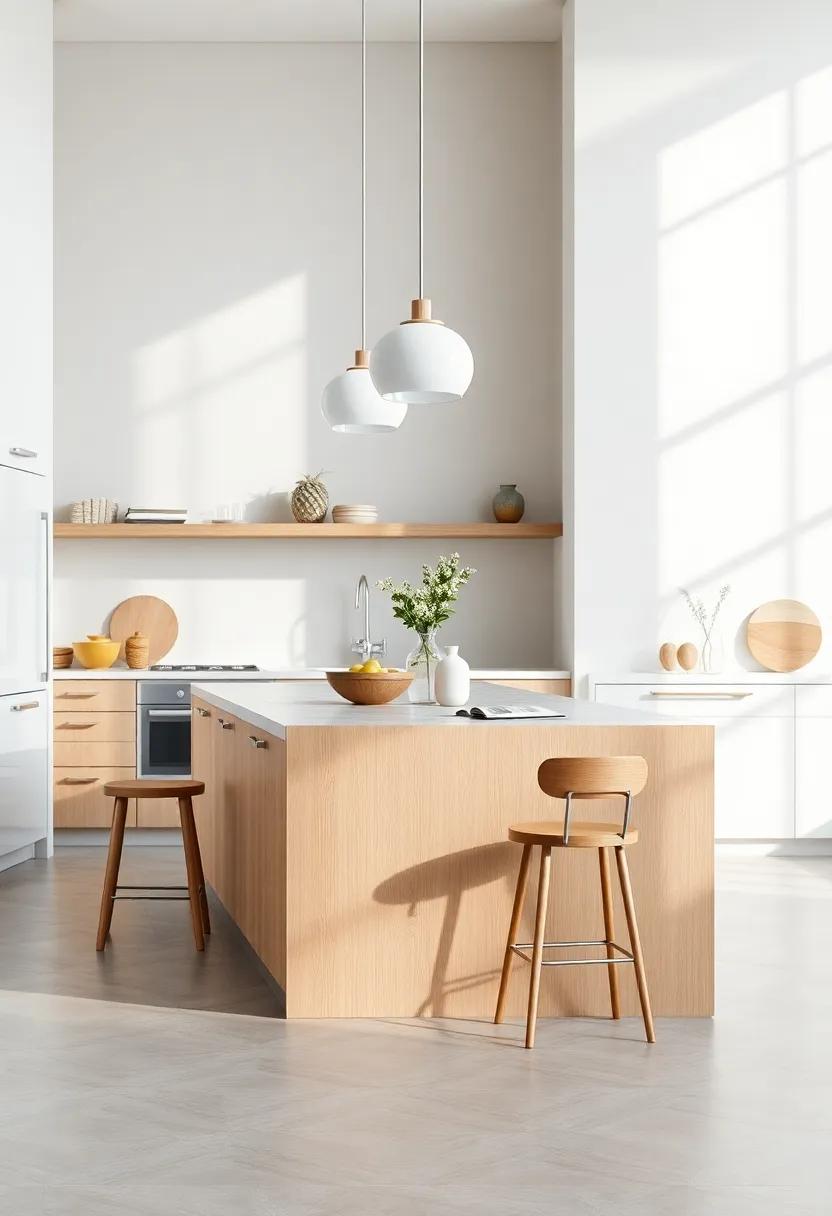
In a Scandinavian kitchen, the island transcends its primary function of food preparation to become a vibrant social hub where cherished memories are crafted. This minimalist design invites informal gatherings,with friends and family drawn to its clean lines and unfussy elegance. The seamless flow of space encourages conversations and interactions, making it the perfect setting for cooking classes, wine tastings, or simply sharing a meal together. A well-placed island becomes the canvas for creativity, allowing the kitchen to expand beyond culinary activities into a realm of shared experiences.
The heart of these joyous moments frequently enough lies in the thoughtfully curated elements surrounding the island. Pleasant stools provide an inviting place to sit, while soft lighting casts a warm glow, setting the mood for laughter and storytelling. Add a simple array of fresh herbs or fruits on display to awaken the senses and inspire creativity in meal preparation. By focusing on essential design features, a Scandinavian kitchen island creates a space where the boundaries of functionality and social connection beautifully blur, reminding us that the kitchen is not just for cooking—it’s where life happens.
Seasonal Decor: Minimalist Styling for Every Time of Year
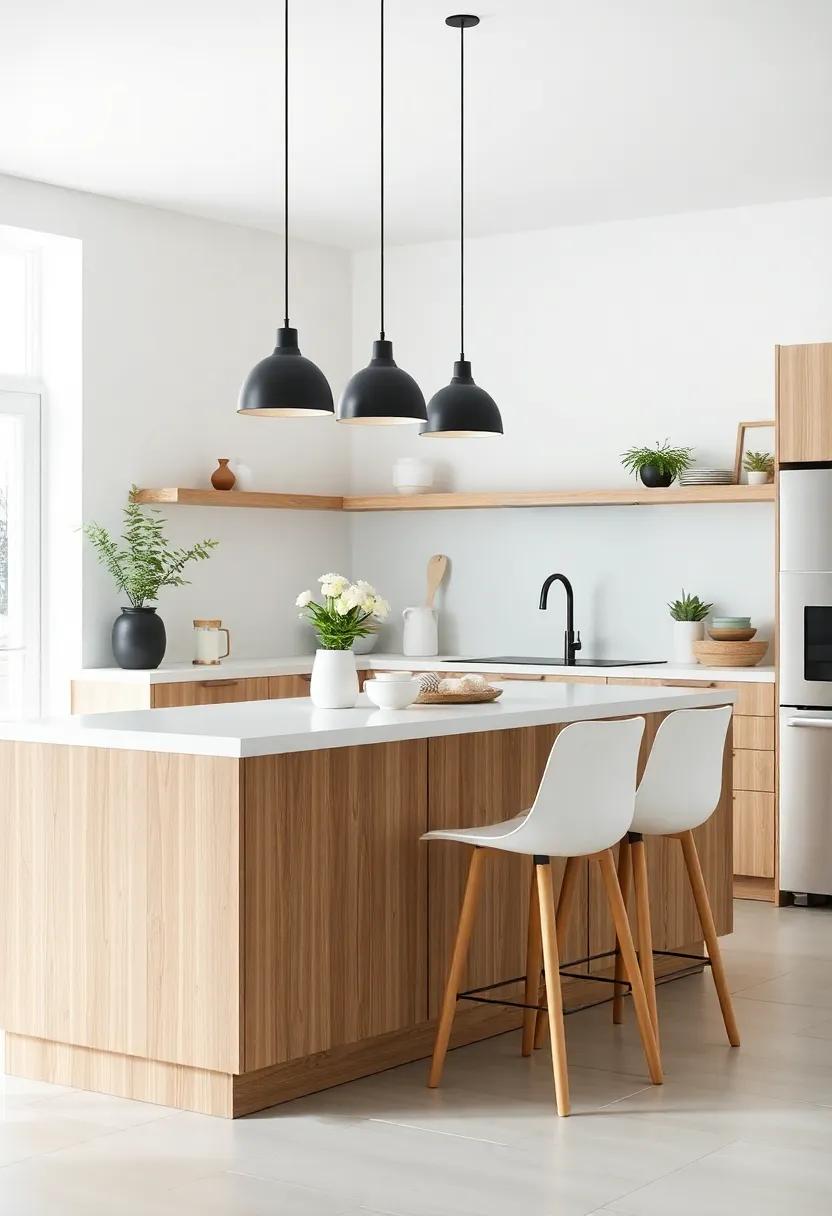
when it comes to seasonal decorating, the Scandinavian approach emphasizes simplicity and functionality over excess. Transforming your kitchen island into a seasonal focal point involves subtle changes that reflect the essence of each time of year. Here are some ideas to keep your decor minimal yet impactful:
- Spring: Introduce fresh flowers in a simple vase or a few potted herbs for a touch of greenery.
- Summer: Use lightweight linens with soft colors and seasonal fruits as natural centerpieces.
- Fall: Incorporate muted tones with natural elements like wooden bowls filled with acorns or mini pumpkins.
- Winter: Utilize cozy textiles,such as a pale knit runner,paired with candles for warmth and ambiance.
To ensure minimalism shines through, consider using a dedicated decor tray on your kitchen island to neatly organize your seasonal items, creating both visual appeal and practicality. A few carefully chosen accessories can go a long way. You might explore different textures and colors through elements like:
| Season | Decoration Ideas |
|---|---|
| Spring | Vase of tulips, pastel dishes |
| Summer | Radiant napkins, fruit bowl |
| Fall | Candle holders, rustic branches |
| Winter | Warm throws, holiday decor |
The Influence of Scandinavian Seasons on Kitchen Design
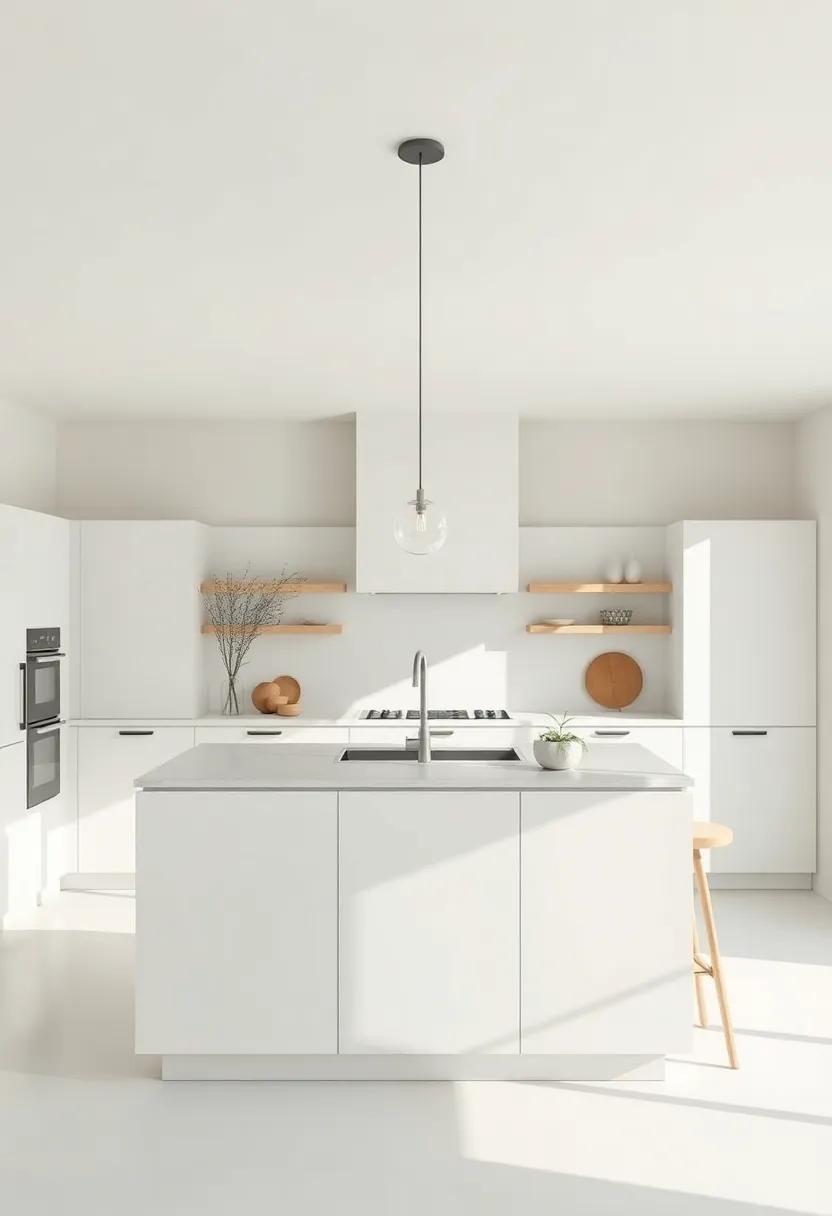
Scandinavian seasons play a pivotal role in shaping kitchen design, particularly in the realm of minimalism. The ever-changing light and color palette throughout the year influence not only aesthetics but also functionality. During the sun-drenched summer months, a Scandinavian kitchen embraces light hues—think soft whites and pale blues—reflecting the sparkling days. In contrast, the long, dark winters prompt the use of warmer tones, adding coziness through elements like natural wood and plush textiles. this cyclical relationship between the seasons and design choices brings about an evolving yet cohesive kitchen space.
Furthermore, the kitchen island stands as a symbol of gathering, reflecting the scandinavian ethos of community and warmth amidst the starkness of winter.Key design features often include:
- Natural Materials: Wood and stone are used generously to create an inviting atmosphere.
- Sleek Lines: Simple, functional designs ensure that the space remains uncluttered.
- Multi-functionality: Islands often serve as both workspace and social hub, embodying both practicality and style.
Seasonal decoration plays a subtle yet notable role as well. A simple table can showcase seasonal blooms or a rustic bowl of vibrant fruits,ensuring that the kitchen island remains lively and reflective of the time of year. The interplay of light, color, and materiality creates a kitchen that harmonizes with the rhythm of nature, inviting daily creativity and connection.
Personalizing Your Space: Unique Accessories for Kitchen Islands
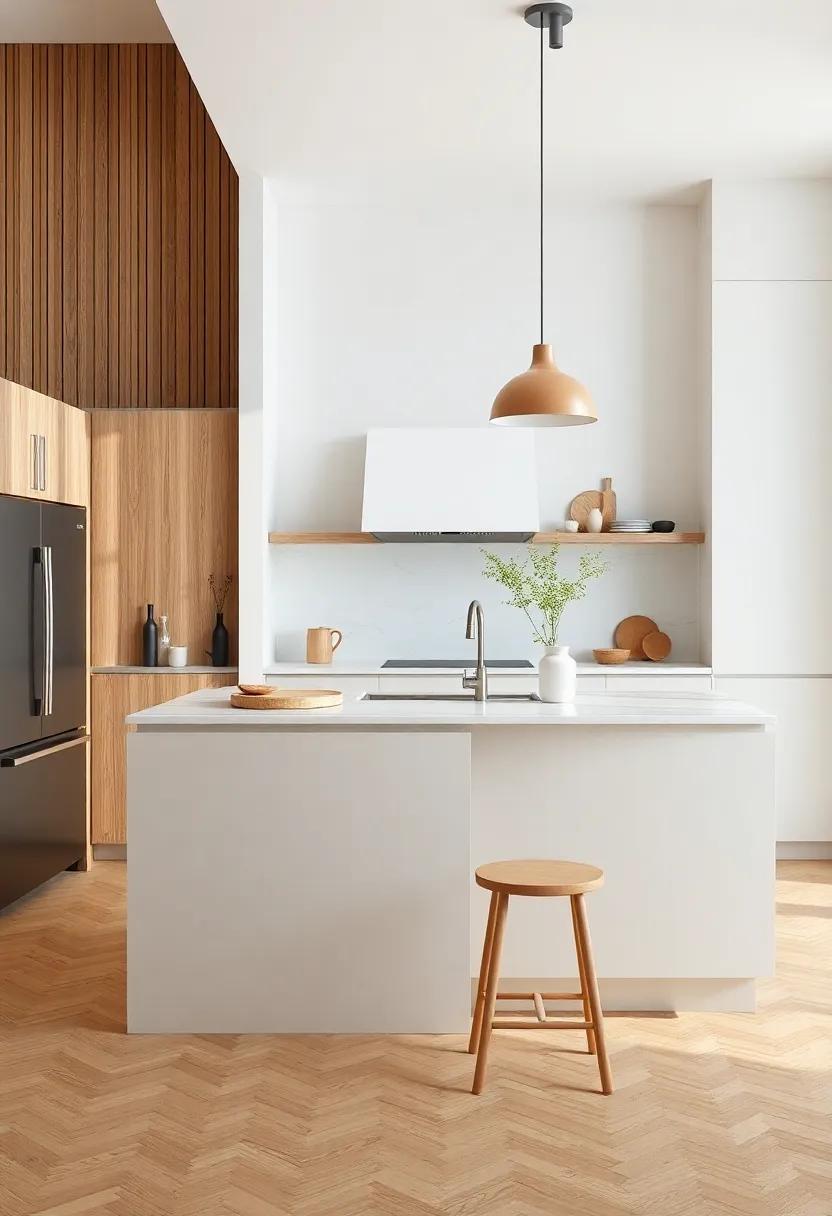
Transforming your kitchen island into a personalized hub requires thoughtful choices in accessories that reflect your unique style. Embrace the Scandinavian ethos by selecting functional yet stylish additions that seamlessly blend form and function. Consider incorporating distinctive elements such as:
- handcrafted Cutting Boards: Choose a variety of sizes and finishes to add texture and warmth.
- Decorative Bowls: Use ceramic or wooden bowls to creatively display seasonal fruits or fresh herbs.
- Artful Utensils: Opt for minimalist wood or stainless-steel utensils, both functional and visually pleasing.
Your kitchen island can also serve as a canvas for unique decor, allowing you to showcase personal taste while maintaining a clean, uncluttered look. Use minimalistic trays to organize cooking essentials and small kitchen gadgets, creating an aesthetic that is both appealing and efficient. A few well-placed greenery items can liven up the space:
- Succulents or Herbs: Perfect for adding a pop of color and freshness.
- Custom Art Prints: Consider displaying a small framed print or a cooking-related quote.
- Candle Holders: Use sleek, thin designs to introduce soft lighting during evening meals.
The Conclusion
In a world often cluttered with excess, the Scandinavian kitchen island emerges as a beacon of minimalism, effortlessly blending form and function. As we’ve explored, this design centerpiece is not merely a piece of furniture; it’s a philosophy that encourages a more intentional and serene way of living. By embracing simplicity, clean lines, and natural materials, the Scandinavian kitchen island invites us to create spaces that reflect both our values and our lifestyle.
Whether you’re preparing a meal, gathering with friends, or simply enjoying a quiet moment of reflection, the kitchen island stands as a testament to the power of minimalism. It reminds us that beauty does not have to be extravagant and that the essence of design lies in creating an environment that feels both harmonious and purposeful.
As you embark on your own journey of embracing minimalism, let the Scandinavian kitchen island inspire you to curate a space that resonates with ease, elegance, and authenticity. After all, the heart of your home is not just about what you include, but about what you choose to leave behind. In the pursuit of simplicity, may your kitchen become not only a hub for nourishment but also a sanctuary for the soul.

